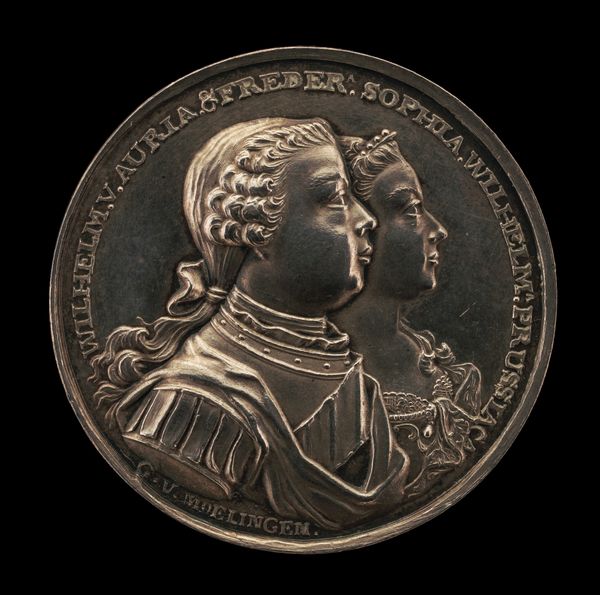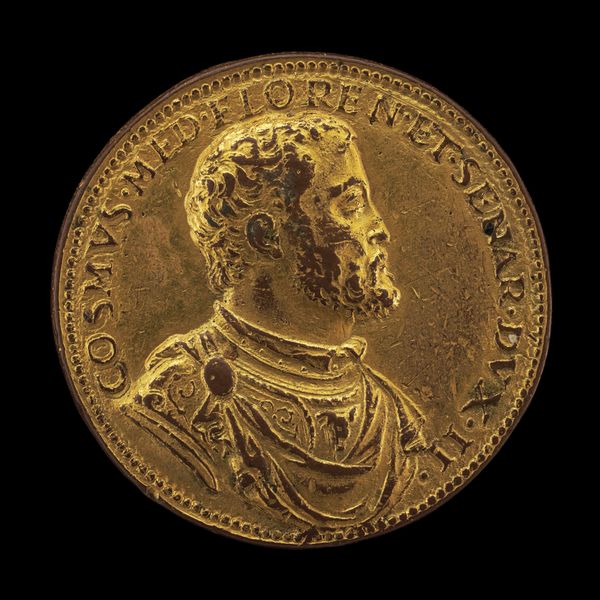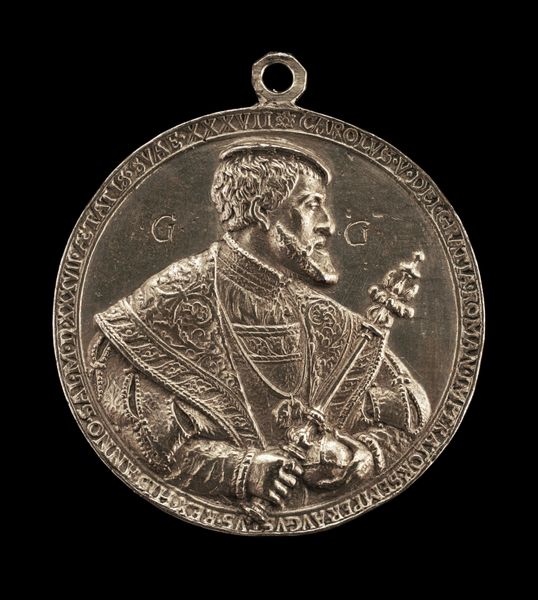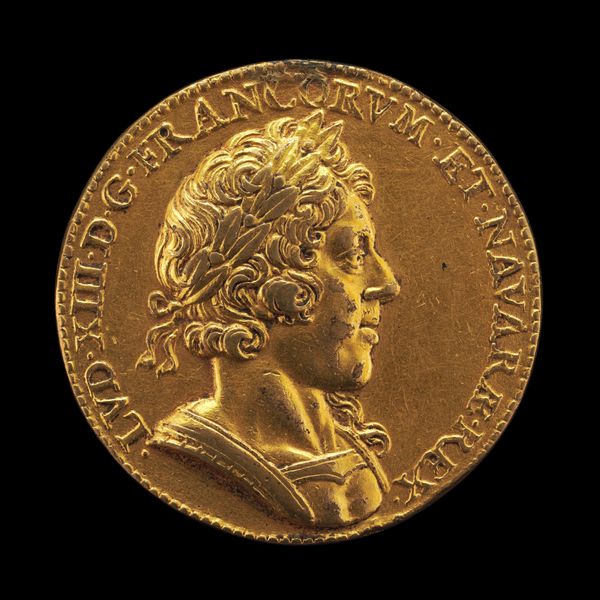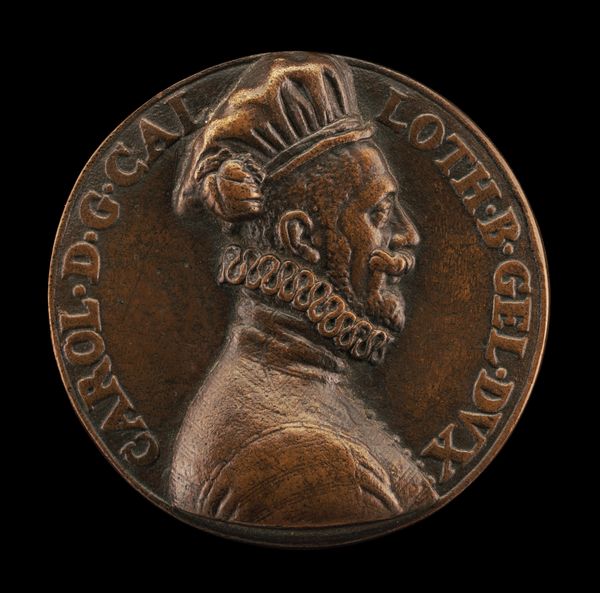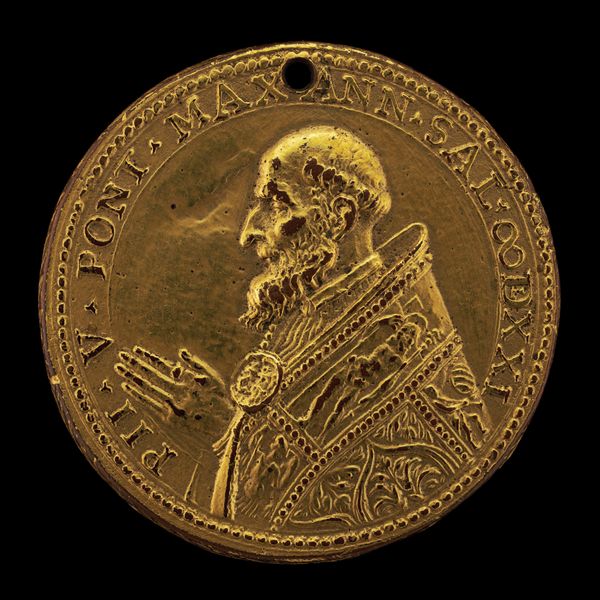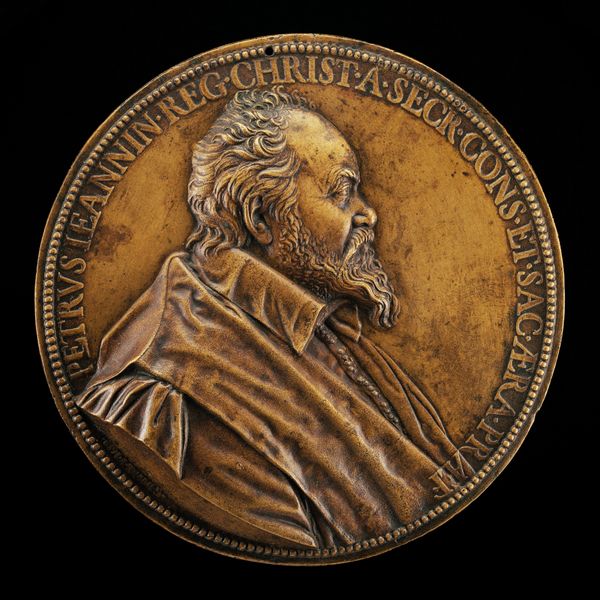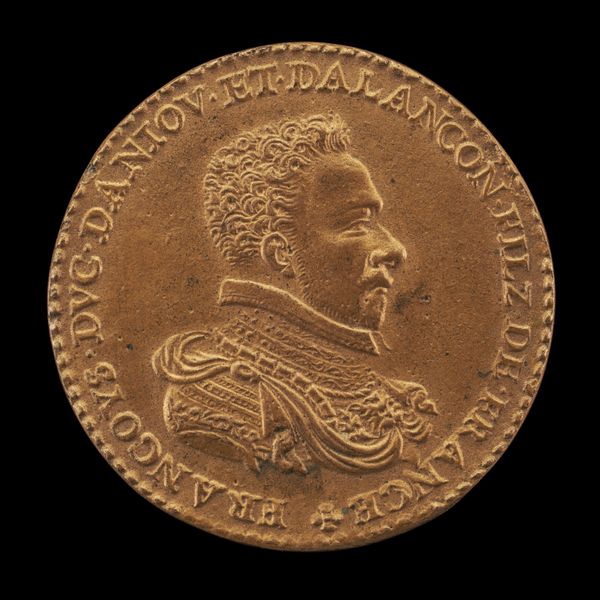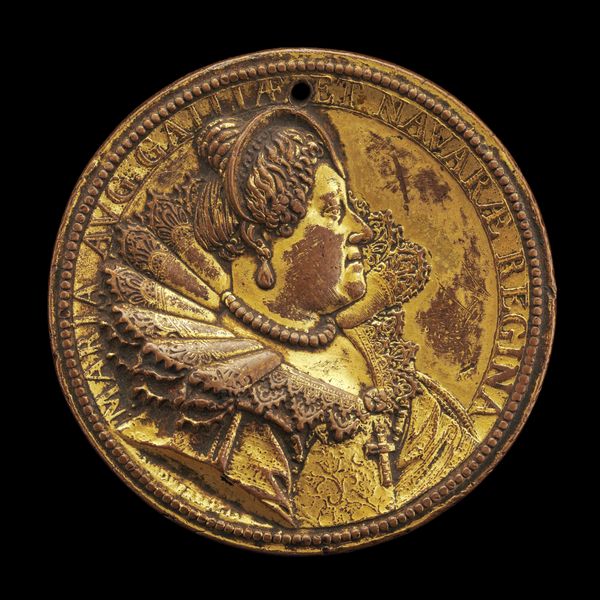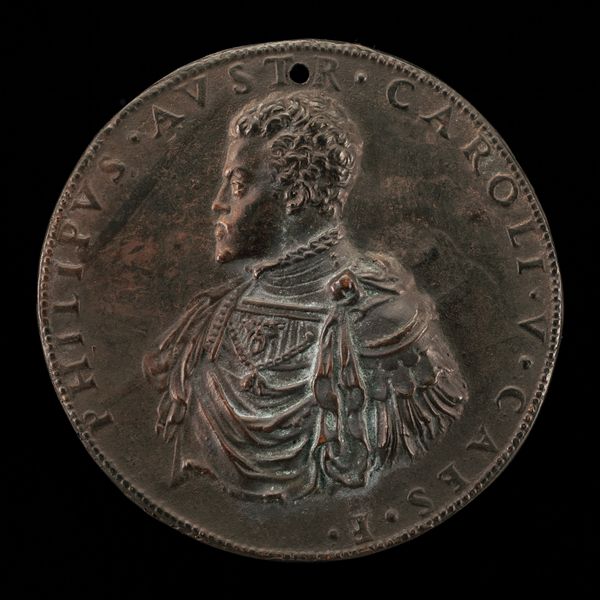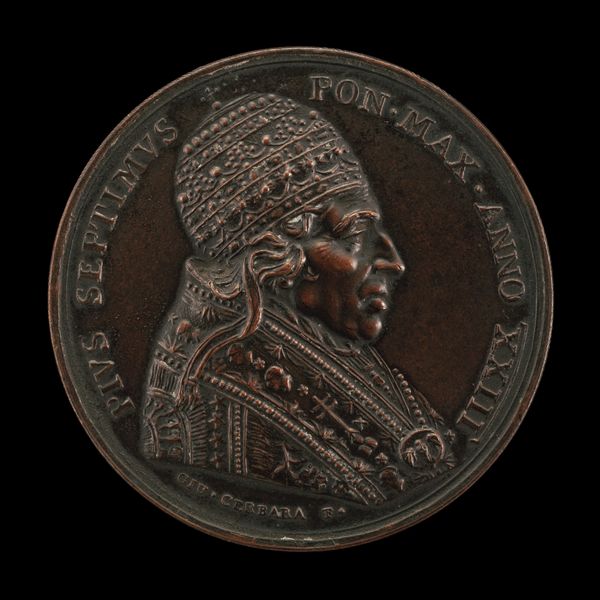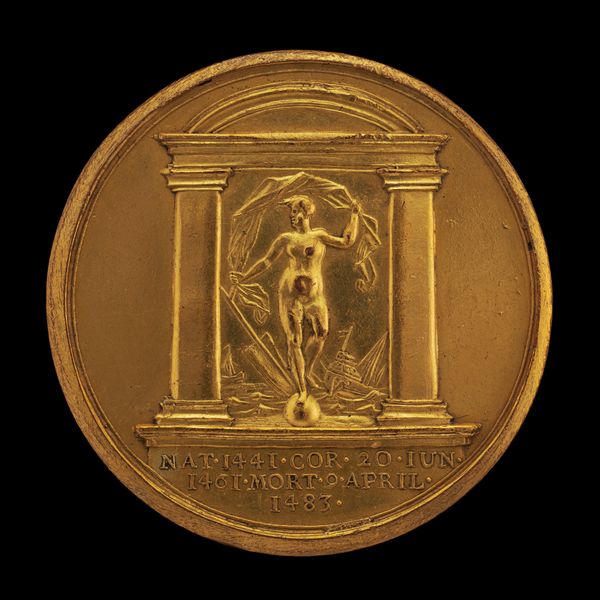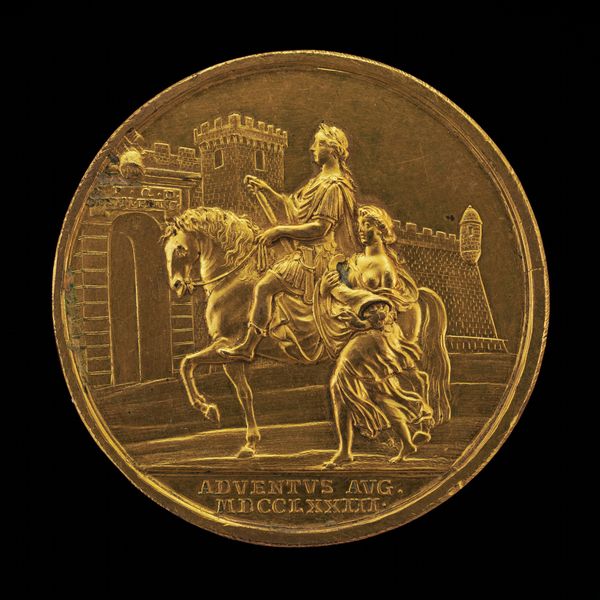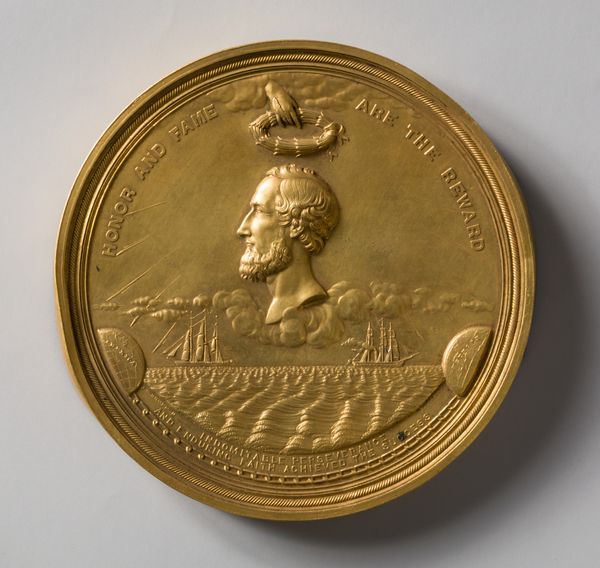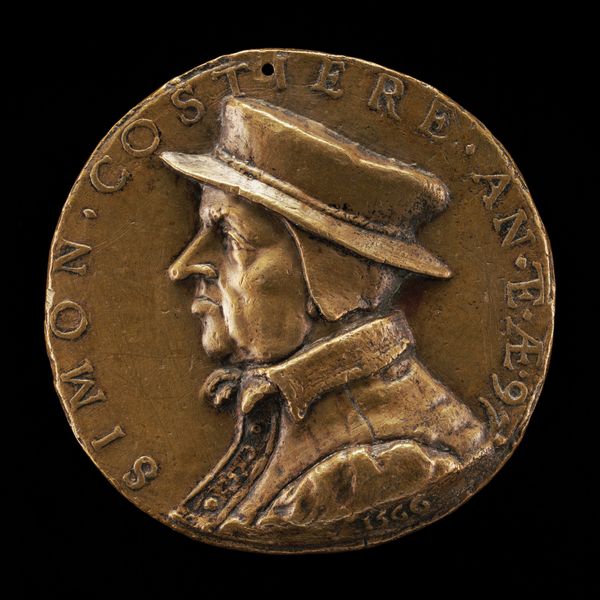![Edward IV, 1442-1483, King of England 1461 [obverse] by Jean Dassier](/_next/image?url=https%3A%2F%2Fd2w8kbdekdi1gv.cloudfront.net%2FeyJidWNrZXQiOiAiYXJ0ZXJhLWltYWdlcy1idWNrZXQiLCAia2V5IjogImFydHdvcmtzLzhlZjlmOWJmLWU3ZDMtNDBlZi05ZWExLTBmOGRiM2NhYjI0Ni84ZWY5ZjliZi1lN2QzLTQwZWYtOWVhMS0wZjhkYjNjYWIyNDZfZnVsbC5qcGciLCAiZWRpdHMiOiB7InJlc2l6ZSI6IHsid2lkdGgiOiAxOTIwLCAiaGVpZ2h0IjogMTkyMCwgImZpdCI6ICJpbnNpZGUifX19&w=3840&q=75)
relief, bronze, sculpture
#
portrait
#
relief
#
bronze
#
classicism
#
sculpture
#
history-painting
Dimensions: overall (diameter): 4.11 cm (1 5/8 in.) gross weight: 32.89 gr (0.073 lb.) axis: 12:00
Copyright: National Gallery of Art: CC0 1.0
Curator: This impressive bronze relief, created by Jean Dassier in 1731, depicts Edward IV, the King of England from 1461 to 1483. It's part of a series of historical portraits the artist produced. Editor: The piece has an interesting duality. The strong profile and meticulous detailing certainly exude power, but the rather flat rendering and highly polished surface lend it an almost decorative feel. Curator: Indeed, Dassier's process is key. He was working in an era where the reproduction of such imagery allowed for a wider dissemination of political messaging and historical narratives. Consider the skill it takes to capture detail in such a dense medium, creating not just an image but an object that signifies authority and lineage. Editor: And structurally, consider the circle format. It forces a compression of space, really focusing attention on Edward's profile, which becomes the sole element dictating meaning. The text which encircles the King both defines and confines the subject, contributing to this idea. Curator: Absolutely, the inscription, "EDOUARD IV D.G ANG. FR. ET. HIB. REX," emphasizes his divinely ordained rule over England, France, and Ireland. But what's the significance, almost three hundred years later, in reviving a Yorkist king like Edward IV? Who was the intended audience and how would they have understood the reference to this controversial figure of English history? Editor: A pertinent question! I’d be curious about what that type of bronze was typically used for in the 18th century as well. Bronze carries inherent connotations with strength and permanence. Even more than that though, what do the smooth finish and highly reflective surface bring? It speaks to classical ideals and artistry doesn’t it? It gives an almost otherworldly aesthetic. Curator: And while that question goes unawnsered, think about Dassier, crafting a portrait of power almost three centuries after Edward's death, responding to an evolving political and economic landscape where new forms of authority were emerging. Editor: The craftsmanship itself reflects this desire to preserve and ennoble figures through materiality. What is lost of historical context perhaps gains in aesthetic power! Curator: Ultimately, it is through understanding production— the artist's labor, the economic investment in bronze, and the historical context that shaped his patrons needs —that we grasp the meaning of Dassier's work. Editor: I concur. Seeing it formally versus viewing it through a lens of production makes it much more evocative. It leaves us more informed about how the materiality influences perception.
Comments
No comments
Be the first to comment and join the conversation on the ultimate creative platform.
